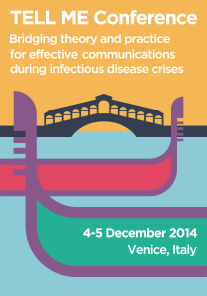A close look at Ebola
Planning a clinical trial in order to test a possible treatment for Ebola. This is the reason that brought Roberto Satolli – physician and journalist, director of Zadig and member of the TELL ME project – to the small fishing town of Lakka, a few miles from Freetown, in Sierra Leone. He is there with Emergency, the Istituto Spallanzani of Rome and the Reggio Emilia IRCCS, to assess the situation and discuss the protocol that should lead the research. “In order to better coordinate some aspects of the experimentation, my presence on the field was necessary,” explains Roberto. “In these days I am participating to meetings and discussions with health operators and members of NGOs. We are trying to understand which are the best approaches to tackle the disease. For instance, there is an ongoing ethical debate about compassionate cures and the feasibility of randomized clinical trials. And communication is a key element in such a debate.”
Roberto is mainly dealing with healthcare workers, but he also has the chance to see the world outside the centre. “Coming here helped me to realize the seriousness of the situation, which is way different from what we imagine, in the Western countries. Ebola here is real and people die.”
Since his arrival at Freetown airport, he could not help but notice all the signs explaining what to do to avoid Ebola infection. “There are two interesting elements about them, in terms of communication,” says Roberto. “The first is that they are mainly pictures, since two thirds of the adult population of the country are illiterate. The second is that they show people vomiting or defecating directly on the ground, since here is quite common to do that. Showing a person that uses a privy would not have been that effective.”
There are relevant cultural differences in the way people behave and react to a dramatic crisis like this one. Differences that everybody involved in communication should be aware of. Westerners are scared by Ebola. This is a fact made evident by many clues. One of them is the traffic generated on Twitterabout the disease: 21,037,331 tweets during October in the US, while Guinea, Liberia, and Sierra Leone combined cannot reach 14 thousands. A difference that cannot be explained only by internet connectivity. As pointed outby Gregg Mitman, on the New England Journal of Medicine, fear has its own ecology. “It varies with cultural traditions and religious beliefs. Rich people experience it differently from poor people. And it changes over time,” writes Mitman.
Those living in Sierra Leone are scared too but, apparently, in a different way. “My first impact with this place was, in a way, surreal,” tells Roberto. “There are not too many people in the streets during the day but in the evening the mood changes and the town becomes quite lively. Obviously, things are changed. Many small bars have been closed for security reasons since the beginning of the epidemics, but other shops and markets are still open. At markets’ entrance there is always a container with a bleaching solution to wash your hands and somebody that takes your temperature with a thermometer gun. I usually have my temperature measured four-five times a day. Most of these checkpoints are established by the government, but some are the result of citizen self-organization. In general, I would say that fear is not that palpable – not as much as I was expecting. However, you can feel that there is something wrong going on.”
Different environmental conditions means different reactions to fear. “These people have a relationship with risk, diseases and death that is quite different from ours.” For instance, in Sierra Leone, malaria still has a high incidence and is killing much more persons than Ebola. And then there are all the consequences of years of civil war. “Unfortunately, fear and death are part of the life of this people,” concludes Roberto.


